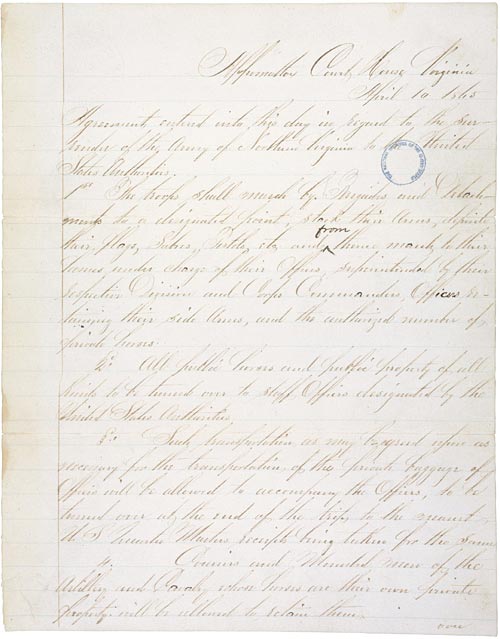
nannysclosetbestdeals
NEW YORK TIMES,APRIL 10, 1865-UNION VICTORY- SURRENDER OF GENERAL LEE&HIS ARMY NEWSPAPER
On April 9, 1865, Gen. Robert E. Lee surrendered to Lt. Gen Ulysses S. Grant at Appomattox Court House in Appomattox, VA. The next day, on April 10, 1865, Lee issued his Farewell Address, also known as General Order No. 9, to the Army of Northern Virginia. The address was written and drafted by Col. Charles Marshall and edited by finalized by Lee.
Headquarters, Army of Northern Virginia, 10th April 1865.
General Order
No. 9
After four years of arduous service marked by unsurpassed courage and fortitude, the Army of Northern Virginia has been compelled to yield to overwhelming numbers and resources.
I need not tell the survivors of so many hard fought battles, who have remained steadfast to the last, that I have consented to the result from no distrust of them.
But feeling that valour and devotion could accomplish nothing that could compensate for the loss that must have attended the continuance of the contest, I have determined to avoid the useless sacrifice of those whose past services have endeared them to their countrymen.
By the terms of the agreement, officers and men can return to their homes and remain until exchanged. You will take with you the satisfaction that proceeds from the consciousness of duty faithfully performed, and I earnestly pray that a merciful God will extend to you his blessing and protection.
With an unceasing admiration of your constancy and devotion to your Country, and a grateful remembrance of your kind and generous consideration for myself, I bid you an affectionate farewell.
— R. E. Lee, General, General Order No. 9
Articles of Agreement Relating to the Surrender of the Army of Northern Virginia (1865)
On April 9, 1865, Generals Ulysses S. Grant and Robert E. Lee met in the parlor of a house in Appomattox Court House, Virginia, to discuss the surrender of the Army of Northern Virginia, which would effectively end the Civil War.
After the fall of Richmond, the Confederate capital, on April 2, 1865, officials in the Confederate government, including President Jefferson Davis, fled. The dominoes began to fall. The surrender at Appomattox took place a week later on April 9th.
Generals Ulysses S. Grant and Robert E. Lee met in the parlor of a house in Appomattox Court House, Virginia, to discuss the surrender of the Army of Northern Virginia. The surrender formalities lasted four days. The terms were generous: the men of Lee's army could return home in safety if they pledged to end the fighting and deliver their arms to the Union Army.
On April 12, 1865, in a quiet but emotional ceremony, the infantry of Lee's army surrendered their arms, folded their battle flags, and received their parole papers, which guaranteed them safe passage home.
While it was the most significant surrender to take place during the Civil War, Gen. Robert E. Lee, the Confederacy's most respected commander, surrendered only his Army of Northern Virginia to Union Gen. Ulysses S. Grant. Several other Confederate forces – some large units, some small – had yet to surrender before President Andrew Johnson could declare that the Civil War was officially over.
The Grant-Lee agreement served not only as a signal that the South had lost the war but also as a model for the rest of the surrenders that followed. After Richmond fell and Davis fled, Confederate commanders were on their own to surrender their commands to Union forces. Surrenders, paroles, and amnesty for many Confederate combatants would take place over the next several months and into 1866 throughout the South and border states.
Not until 16 months after Appomattox, on August 20, 1866, did the President formally declare an end to the war.
AWESOME FOR SERIOUS COLLECTOR FOR ANY HISTORIAN!!!!!!
THESE ITEMS WILL MAKE GREAT GIFTS TOO.....
WITH A LOW STARTING PRICE OF $129.99!!!!
